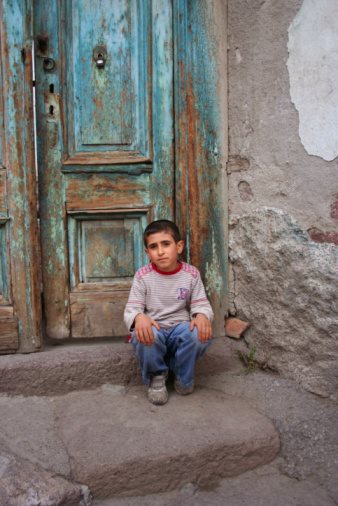
What Caused the Surge in Iraqi Refugees?
The Middle East has been a region of conflict for decades. Iraq, in particular, has experienced its share of turmoil in the form of dictatorship, sectarian violence, and war. The ongoing conflict in Iraq has had a profound impact on the country’s citizens, many of whom have been forced to flee their homes in search of safety and stability. In this article, we will explore the factors that have caused the surge in Iraqi refugees.
What is a Refugee?
Before we dive into the causes of the surge in Iraqi refugees, it’s important to understand what a refugee is. According to the United Nations Refugee Agency (UNHCR), a refugee is “someone who has been forced to flee his or her country because of persecution, war, or violence.” Refugees are individuals who are unable or unwilling to return to their country of origin due to fear of persecution.
The UNHCR estimates that there are over 26 million refugees worldwide, with the majority of them originating from Syria, Afghanistan, and South Sudan. Iraq is also home to a significant number of refugees, with an estimated 334,000 refugees at the end of 2020.
The Conflict in Iraq
The conflict in Iraq began in 2003 when the United States and its allies invaded the country to overthrow the regime of Saddam Hussein. The war lasted for over a decade and resulted in the deaths of over 200,000 Iraqis and thousands more injured. Although the conflict officially ended in 2011, Iraq remains a volatile and unstable country.
The Fall of Saddam Hussein
The fall of Saddam Hussein’s regime created a power vacuum in Iraq, which created an opportunity for extremist groups such as ISIS to rise to prominence. The power vacuum also led to widespread sectarian violence between the Sunni and Shia populations in Iraq.
Sectarian Violence
The sectarian violence in Iraq is primarily between Sunnis and Shias, who both make up a significant portion of Iraq’s population. Sunnis make up around 20% of Iraq’s population, while Shias make up around 60%. The remaining 20% of the population is made up of Kurds and other ethnic and religious groups.
The sectarian violence in Iraq reached its peak in 2006 and 2007. During this time, there were numerous bombings, suicide attacks, and roadside bombings, which resulted in the deaths of tens of thousands of Iraqis. The violence was primarily sectarian in nature, with Sunnis and Shias attacking each other’s neighborhoods, homes, and places of worship.
ISIS
The rise of ISIS in Iraq was a major factor in the surge of Iraqi refugees. ISIS, which stands for Islamic State of Iraq and Syria, is a radical Islamist group that aims to create an Islamic state in the region. The group was initially formed in Iraq during the US occupation in 2006 and later expanded into Syria.
Politically, before the United States invaded Iraq in 2001, Iraq was ruled by the Baath party led by Saddam Hussein, who was forced out of power by the United States. While Hussein was in power, a person might have had no choice but to become a political refugee, fearing for their lives in the face of the brutality that may have been brought upon them.
In 2008, despite the fact that Saddam was no longer in power and the number of persons who were forced to become a political refuge, uprooting and endangering their spouses and refugee children, was all but gone, Iraq has still considered one of the most dangerous countries in the world due to the fact that the people of Iraq still faced violent opposition from those who were still in favor of the previous political system, even though 63% of eligible voters voted in the first ever political election that was considered democratic. America still has troops stationed in Iraq as a way of calming the violence that still takes place on a regular basis.
One ethnic group that makes up roughly 17& of Iraq’s population is known as the Kurds. The Kurds have often been known to have many persons claiming to be political refugees. Children also are commonly refugees with their families. Due to tensions between neighboring areas, the Kurds have found themselves to be targets for many political attacks; therefore, a Kurd is often forced to become a political refugee.
Although Iraq has more political freedom now, there are still a very large number of displaced Iraqis: a political refugee from Iraq may reside in any nearby country. An Iraq political refugee may be scared to return to Iraq due to the unstable conditions caused by war and the complete political change. They also may be afraid to return their families who left with them including wives and refugee children.
Currently, the United Nations is working with the Iraq government in order to create safer conditions for any political refugee to return to Iraq. However, many feel that the government has failed to be realistic about the current political, economic, and social conditions in Iraq. The number of political refugees in Iraq has always increased with each war that has taken place there.




















